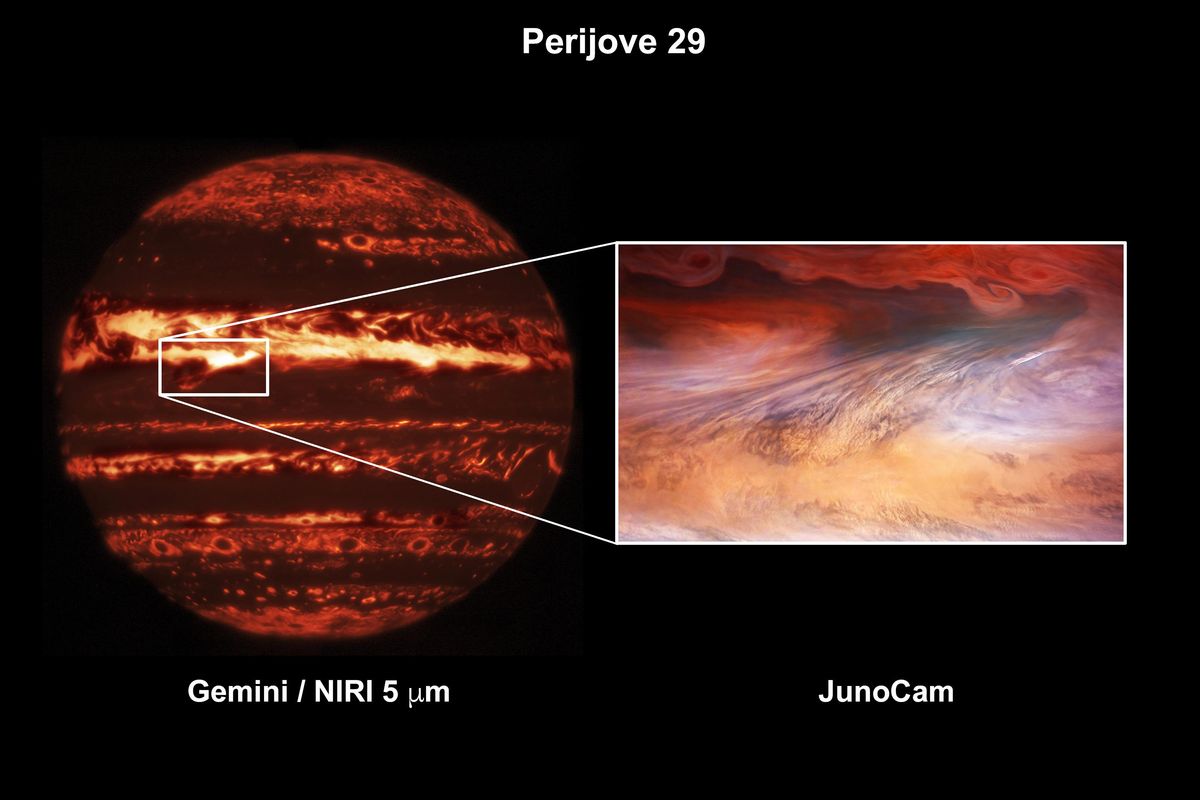Warm up with this cozy image of a hot spot on Jupiter

A new composite image of Jupiter’s atmosphere shows a hot spot glowing brightly in infrared wavelengths.
Astronomers and amateur image processors combined data from the NASA Juno spacecraft at Jupiter and the Gemini North Telescope at Mauna Kea, Hawaii, to create the epic image. Although researchers have known about hot spots on Jupiter for more than 25 years, views such as this one give scientists a better understanding of how storms and atmospheric waves contribute to the “elusive” water content in Jupiter’s atmosphere, NASA officials wrote in a statement.
“To the naked eye, Jupiter‘s hot spots appear as dark, cloud-free areas in the planet’s equatorial belt, but at infrared wavelengths they are extremely bright, revealing the warm, deep atmosphere below the clouds,” the statement continued.
In photos: Juno’s amazing views of Jupiter
NASA released the image just weeks after newly public data from the Juno spacecraft revealed that hot spots on Jupiter are wider and deeper than scientists previously realized. Juno gathers its data comes during periodic swoops of Jupiter, called perijoves, which show scientists more about the planet’s atmosphere.
The NASA Galileo spacecraft likely was the first to discover the planet’s hot spots, when it accidentally flew through one on its way to a planned demise in Jupiter’s atmosphere. (The spacecraft was finishing a long mission in 1995 and scientists threw the spacecraft into Jupiter to destroy the spacecraft and eliminate any chance, however small, of contaminating one of Jupiter’s possibly habitable icy moons.)
Galileo found a windy and dry environment as it plunged to its demise, which was not what scientists expected. Researchers thought the spacecraft had found a “desert” in an otherwise moist northern equatorial region, but more recent results from Juno suggest this whole zone is actually quite dry.
NASA recently extended Juno’s mission through 2025, although the spacecraft may not survive that long in the intense radiation environment surrounding Jupiter. But for now, an independent review committee advising NASA on the decision noted, the spacecraft remains healthy and has plenty of power. The extended mission observations will help NASA prepare for its forthcoming Europa Clipper mission to the icy moon of Europa, the panel added.
Follow Elizabeth Howell on Twitter @howellspace. Follow us on Twitter @Spacedotcom and on Facebook.
